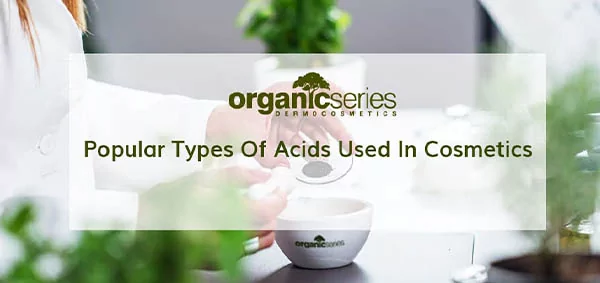Even if there is currently more and more debate about the use of acids in cosmetics in the context of innovations, we are not dealing with any harmful revolution. Acids were utilised to improve attractiveness in antiquity. Ancient Egyptian ladies who bathed in milk and cleansed their faces with lemon juice recognised the benefits. It’s obvious that they had no idea they were working with Alpha-Hydro acids at the time (AHAs). So, let’s take advantage of this fact and learn about the types of acids that are acceptable in cosmetics, their qualities, and how they work.
What ARE HYDRO ACIDS AND WHAT ARE THEIR Characteristics?
Hydro acids are the most commonly used acids in cosmetology. They are an important part of the organic compounds that contain at least one hydroxy and one carboxyl.
But what does this really mean? In what way do they work and why are they so prevalent in current cosmetics?
THE MAIN PROPERTIES OF HYDRO ACIDS THAT ARE USED IN COSMETICS ARE:
- exfoliating of dry cells
- stimulation of cell reproduction
- activation of collagen fibres
- antimicrobial activity
- elimination of discolouration
- scars and fine wrinkles.
Hydro acids also assist other beauty compounds in their activity.
The action of hydro acids is, of course, very reliant on the concentration levels of these acids. Some home-use cosmetics, lotions, peels, include low quantities of acids. Treatments that use a high concentration of acid have more dramatic results, but they can also have negative effects, thus they should only be used by a professional in a beauty or dermatology clinic.
ALPHA-HYDRO ACIDS
Naturally occurring Alpha-Hydro acids such as those found in fruit, cereal grains, milk, and sugar cane are the most commonly used form of this class of compound. AHA acids are water-soluble. As a result, they are less likely to penetrate the sebum layer and have more of a pronounced surface effect. They’re most commonly prescribed to patients with dry, sensitive, or acne-prone skin (in the latter case, slightly higher concentrations are used).
THE MOST COMMONLY USED ALPHA-HYDRO ACIDS ARE:
- Lactic acid – Fermentation of sugar using lactic acid bacteria produces lactic acid, which is used as a preservative. Buttermilk and yoghurt are two examples of where we may find it in its natural state. As a result, it is commonly used in cosmetology for face cleaning, where its exfoliating and antimicrobial qualities make it ideal for the job. It also does a fantastic job of moisturising the skin.
- Glycolic acid– derived largely from sugar cane, it has a fine particle structure that allows it to go deep into the epidermis. Glycolic acid increases collagen production, promotes cell regeneration, and minimises the appearance of discolouration. However, because it’s an acid, If left on the skin too long can occasionally have unanticipated side effects like irritation, burning, or erythema, which is unpleasant.
- Citric acid – occurs primarily in citrus fruits, it can also be found in milk and beetroot. Like the aforementioned Alpha-Hydro acids, it exfoliates and activates cell renewal, while slightly brightening the skin.
- Almond acid – predominant in lemons, we can also find it in milk or beetroot. It exfoliates and stimulates cell regeneration, while lightening the face, just as the previous Alpha-Hydro acids do.
- Azelaic acid – Naturally found in Cereal grains. It’s mostly used to treat acne (including blackheads, ordinary acne, and rosacea) and seborrheic dermatitis. The strong anti-inflammatory and antioxidant property of this supplement also help to keep your skin looking young. Additionally, because of its capacity to reduce the amount of melanin produced when applied topically, it is effective in the treatment of hyperpigmentation.

BETA-HYDRO ACIDS
The Beta-Hydro acids make up the following section. Only salicylic acid, one of the members of this group of acids, has been utilised in cosmetology up to this point. For example, willow bark, raspberries, birch leaves, senna, and chamomile flowers can all be used to make it. Like other hydro acids, it exfoliates the skin while also penetrating deep into the epidermis to effectively clean the pores. Salicylic acid is excellent for the treatment of acne and blackheads because it has antibacterial and anti-inflammatory properties. It may also be used on both vascular and sensitive skin due to its characteristics.
POLYHYDROXY ACIDS
Polyhydroxy acids (PHAs) are being used more and more often in cosmetics today. Lactobionic acid or gluconolactone are examples of compounds that can function as representatives in this situation. They have certain qualities with alpha-hydro acids, but they are milder in action, completely soothing irritation as well as moisturising. Using these creams can also be beneficial for those with sensitive skin, vascular issues, and even some skin conditions, such as psoriasis. They also have the benefit of not causing photosensitization, making them suitable to use during the summer.
HYALURONIC ACID
Hyaluronic acid (glycosaminoglycan) is a polymer present in all living creatures and is frequently used in cosmetics. Originally derived from shark or cock comb skin, it is currently made by using specific types of bacteria in the fermentation process. Hyaluronic acid is extremely good at holding water molecules together. As a result, it is widely used in cosmetics and anti-aging treatments. Ideal for skin moisturisation, smoothing as well as firming and tightening.
ACID TYPES WILL NO LONGER BE A SECRET TO YOU!
Although our online shop sells milder face acids that may be used at home, harsher acids should only be handled by a professional. To avoid discoloration after an acid peel, wear sunscreen every day.
delta
All Author Posts

